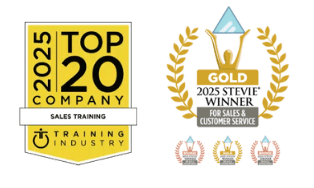As the sales world gets smaller, it is imperative that good salespeople consider how they communicate, present, and establish themselves with their clients and prospects. Whether you are a salesperson from India selling to Latin America or a Norwegian selling to a Canadian, there are important factors to consider in advance as part of your Thought Leadership preparation. Are you using language that is universal or local to your heritage? Are you selling to an executive who is an Engineer, Sales and Marketing Leader, or Controller for the company? Each of these would require language, communications, and stories relevant to what they represent for their company.
In Kiss, Bow, or Shake Hands, authors Terri Morrison and Wayne A. Conaway point out at the very beginning that the person of another country you are speaking with may be speaking with you in your native tongue. However, that person is thinking in their own language, making your expressions or sayings incomprehensible.
Let us take this to an actual sales meeting. I witnessed a senior salesperson speaking to a potential client in Latin America. It was a virtual meeting with the clients sitting around a table. Introductions were conducted, and the client appeared to speak well in English. The salesperson started the meeting by stating, “We want to be your quarterback and help you reach a quick touchdown for your business.” The client appeared to nod, expressionless, and said nothing. Why? They did not care about or watch American Football.
The audience was a group of executives who came from the finance side. The salesperson spoke about all the ins and outs of their product, missing any ties to the financial impact to the client’s business. This client wanted to hear how the offering could help reduce operating expenses and enable money to be used for other important projects. The meeting ended with cordial “thank you” comments. However, nothing of substance came from this meeting because the salesperson did not speak to the audience in a language that had an impact.
Before a meeting, whether in person or virtual, there are three imperative steps to take regardless of where you are located on the globe.
- Do your research: Sounds basic, but so often, we as salespeople get so excited about the meeting that we forget to do enough of this. Where did the participant(s) go to school, what languages do they speak, what was their degree, and what jobs have they had? In a LinkedIn write-up, the person(s) will often tell you their strengths and visions for a job role. Take note of this for your presentation.
- Tap into your co-workers: Speak with others of the same culture within your organization. Ask to see if anyone has spoken with any of the participants and has any insights into the kind of language they like to hear.
- Keep language, words, and phrases professional: Avoid what you consider common expressions, idioms, or examples that “everyone knows.” Keep in mind whom you are speaking with and their language – whether it is a native tongue or a business language, be it technical, numerical, or business growth.
Learning the cultural and linguistic background of potential customers can help close more deals. Taking time to understand a person’s customs reflects an effort to gain respect, trustworthiness, and authenticity – ultimately leading to stronger customer relationships. These are some of the most significant factors when selling virtually and in-person. Think about if the salespeople interacting with my dad had taken the time to understand his background; think of the difference that would have had.
Personal Challenge:
Read a book or travel guide on the areas your client or potential clients are from. This will help teach you about their culture and give you valuable insights.




